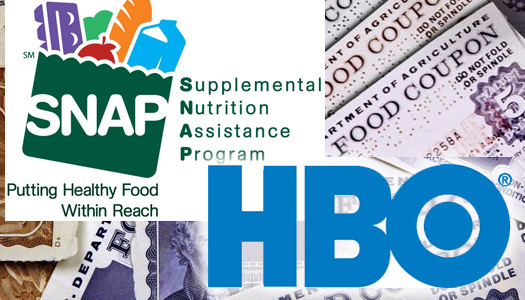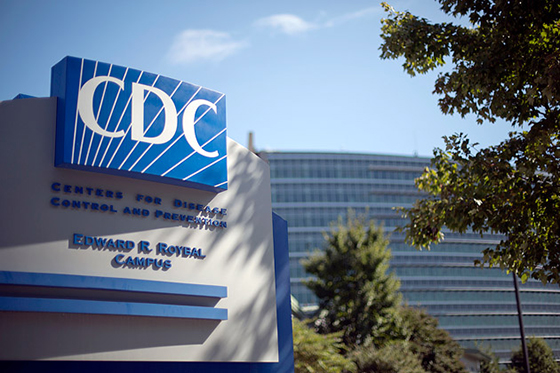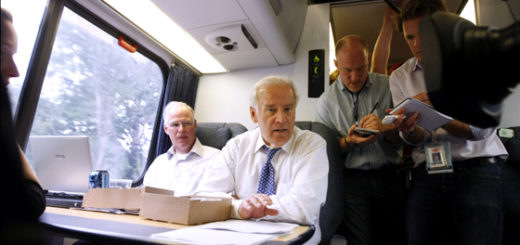Premium cable or groceries? Why not both?
Listen to the broadcast of You Tell Me on KTBB AM 600, Friday, July 19, 2013.
MP3 Download
In the Internet age when no story, no matter how trivial, goes unreported, have you heard a single report of a child dying of starvation in Texas? How about Louisiana or New Mexico?
Tennessee, Alabama, Missouri, California, Illinois?
Have you seen or heard even one headline along the lines of, “Child Found Dead of Starvation?” I’ve never heard of such a story and I’m a news junkie by trade.
But the total absence of any report from anywhere of child starvation doesn’t inform the rhetoric of Houston Democratic Congresswoman Sheila Jackson Lee. When congressional Republicans recently tried to slow the expansion of the food stamp program via amendments to a pending piece of legislation, Congresswoman Lee said that their actions would put, “starving children in the abyss.”
I ask again, have you seen or heard of an abyss filled with starving children?
The food stamp program (now called the “Supplemental Nutrition Assistance Program” or “SNAP”) has gone from an emergency program designed to meet exigent need into a program in which just about anyone can enroll at his or her individual option. Poor management of the program has resulted in policy changes and the opening of application loopholes that allow applicants to bypass the income and asset tests that would ordinarily determine eligibility. Many — by some estimates as many as half — of those now receiving food stamps would not have been eligible under the original intentions of the program and are not now eligible under the current nominal requirements. As a result, for those so inclined, if monthly income isn’t quite enough for the “Extended Showcase Plan” from the cable TV provider, it’s no problem. One simply frees up the cash by enrolling for food stamps. The grocery money becomes the cable TV money, thanks to the American taxpayer.
Food stamp enrollment has more than doubled since Barack Obama took office. The administration defends this statistic in part by citing the 2008 recession. It was a deep recession, no doubt. But not that deep. And the administration now tells us at every opportunity that the economy is “heading in the right direction.” Taking that assertion at face value for the moment, that correct heading isn’t having the desired effect on food stamp participation. Food stamp program participation continues to climb. Upward, with respect to federal entitlement, is definitely the wrong direction.
The statistics on food stamp (and by extension all federal welfare participation) are simply staggering. Forty six million Americans now receive food stamps, nearly one in six. Federal welfare programs now consume six percent of the gross domestic product of the largest economy on Earth. According to Sen. Jeff Sessions (R-AL), ranking member of the Senate Budget Committee, if all federal welfare spending were converted to cash, we could send a check for $60,000 to every household in the country currently below the poverty line. (A bad idea made devilishly attractive by its pure efficiency.)
Willfully and systematically expanding government dependency is not the path toward a strong republic. The measure of success for any society is not how many people are being helped by the government. The measure of success is how few people need the help.
Sheila Jackson Lee is a demagogue. Children are not currently starving and none will be put at risk of starvation if we do what needs to be done and restore some sanity to federal programs such as food stamps.
It’s time for those of us who actually pay for such programs to stand up and say, “enough,” to such demagoguery.









I said the same thing for a lot of years. (Not just since Obummer has been in office.)
The non-producers have been dragging the producers down for a long time.
SDrake you have to feel sorry for those poor starving kids now.
This just shows you are one of those bigoted, pull yourself-up-by-the -bootstraps, homophobe guys I keep hearing about!
.
I bet you even pay your own bills.
See, that just shows how little compassion you have for these poor starving kids.
I bet you even pay your own cell bill.!!
Paul, I agree with you more than not, but it is not people who USE assistance, that is the problem! It is those that ABUSE IT!..My wife, is a nurse, we both worked full time until she had a stroke! We have been without HER pay day for 2 years waiting on disability. Cable was the 1st thing I let go, then the phone. I pay my bills as well as I can, but MY check alone will not even pay the rent on 2 weeks pay. I buy groceries, and see people who are not from here. That is as far as I dare go with that, but they are buying $400 and $500 groceries on the Lone Star card. I go buy groceries too with my card when it gets filled, but you see, I am a red blooded American Born White Male, and I get $50 assistance! Now THAT my friend is breaking the bank! You see, I have been a public servant all my life, a firefighter then police officer. We don’t get rich! Some like me get hurt working part time off duty jobs, and can’t do the good paying jobs anymore.
Paul, my wife and I are the first ones to help someone in need but I have to say it drives me crazy to see people shopping without a care in the world about prices. We both love steak and would eat it 3 or 4 times a week if we could afford it. I think the Lone Star card should only work on store brand items and basic protiens. I know some people think thats cruel but if people want more they should work for it like the rest of the world.
I wish there was a way to report people that abuse the rules as they are now because the abuse is so bad just around Tyler
Paul, I agree that the “honorable” Sheila Jackson Lee is a demagogue, which is probably a nice way to describe her and the race hustling tactics that continue to get her elected. If she did not represent a district that expects her to keep delivering free stuff at the expense of others, she could not be elected to a dog catcher position. Her constituents could not care less that she is an embarrassment, and cannot even conjugate simple verbs; they just want her to continue to hand out the free stuff that their fellow citizens have provided. A representative republic can only survive when the populace is educated and informed; which should explain why the Liberals want the pubic schools to continue to be so dismal. Can you say “Detroit” or “Rhodesia”? Hello third world; make way for the U.S.A.!